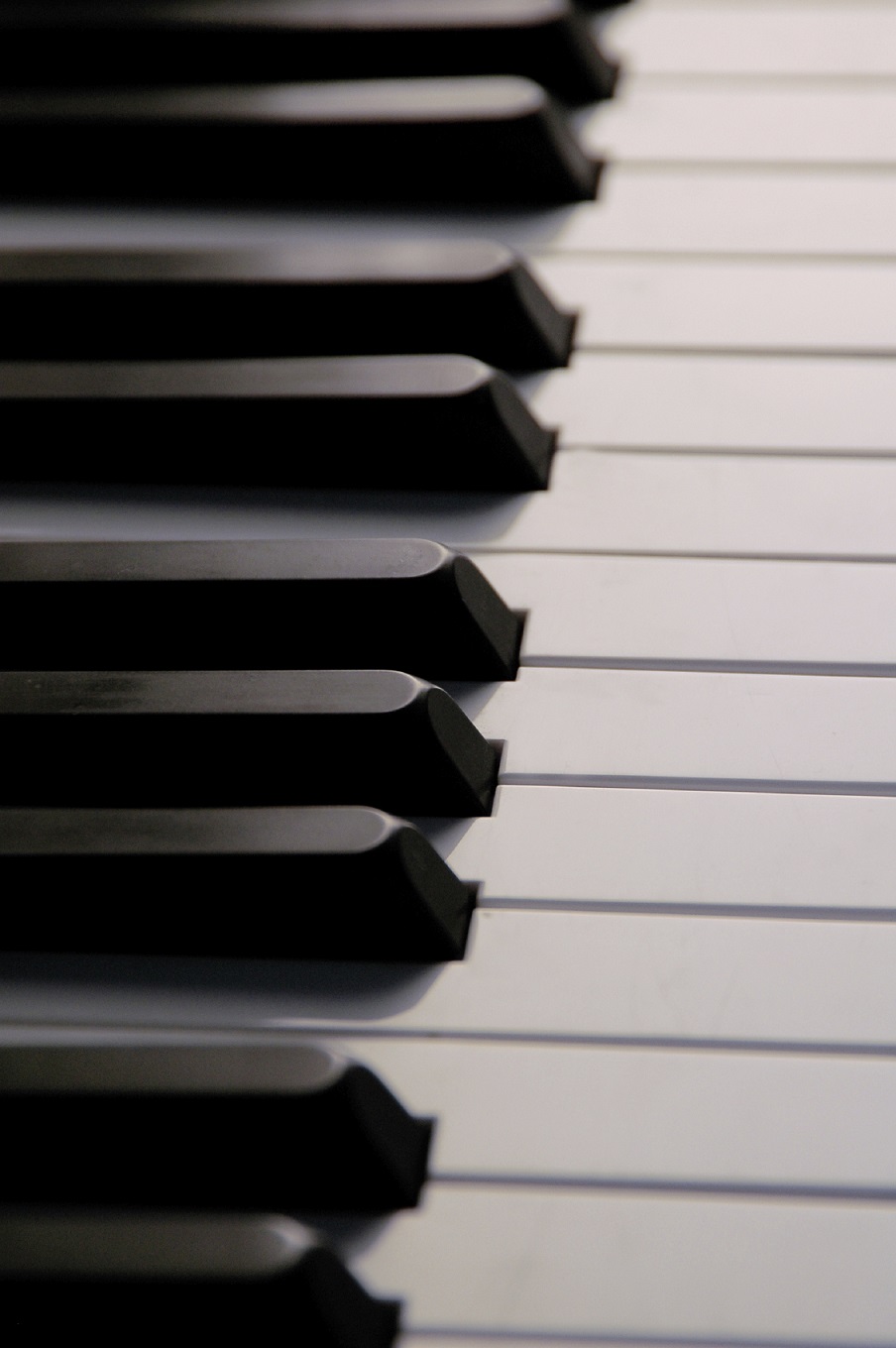 Here’s a topic that pianists have been discussing since the 19th century: Is it OK to change the music text in Beethoven’s piano sonatas (and, of course, anywhere else, too) and extend the pitch range downward at several spots in the left hand? Because even though to some extent keys for the low pitches E1 to C1 were in fact available on English pianos from ca. 1800, they were clearly first “used” in Beethoven’s piano sonatas, however, only later. Up until the piano sonata op. 101, composed between 1815 and the start of 1817, Beethoven faithfully respected the limitation of the pitch-range down to F1 – his music was after all supposed to be playable on a “normal” piano.
Here’s a topic that pianists have been discussing since the 19th century: Is it OK to change the music text in Beethoven’s piano sonatas (and, of course, anywhere else, too) and extend the pitch range downward at several spots in the left hand? Because even though to some extent keys for the low pitches E1 to C1 were in fact available on English pianos from ca. 1800, they were clearly first “used” in Beethoven’s piano sonatas, however, only later. Up until the piano sonata op. 101, composed between 1815 and the start of 1817, Beethoven faithfully respected the limitation of the pitch-range down to F1 – his music was after all supposed to be playable on a “normal” piano.
Only when composing op. 101 did he conclude – perhaps together with his publishers –, that he could count on a wide distribution of new pianos with a larger range. That this was actually a very deliberate step is just so impressively documented by the autograph and first edition of the sonata, as well as by two letters from January 1817 to Beethoven’s publisher. So we read, for instance, in a letter: “at the spot in the last piece where the contra E enters at the 4, I want the letters to be added to the chords” (no. 1067 in the collected edition of the correspondence).
Yes, Beethoven actually demanded at this spot, the climax of the last movement’s development, that pitch letters be added in the musical notation to aid in reading the low chords. In the autograph he recorded this in the bottom margin: “NB: the letters also to be placed underneath in the engraving”:
In the first edition, though, probably owing to lack of space, only the pitch letter “Contra E” was then used (see the illustration from the Urtext edition above), marking for the composer the “door-opener” into an expanded world of low sounds.
Before then, Beethoven had repeatedly come up against limits; to some extent presumably, he was frustratingly aware of these and solved them with compromises, partly viewing the ambitious solutions as creatively stimulating points of departure that served the work. The close of the 1st movement of sonata op. 2 no. 3 certainly belongs to the first category. Its virtuosic C-major frenzy ends in a makeshift solution, the broken-16th octaves expiring in an 8th figure, because there are simply no more keys available in the left hand:
From the perspective of modern instruments, the solution is so frustrating that in his “Critical Instructive Edition” published in 1902, for example, Eugen d’Albert ignores – believe it or not! – the text of the source and “jazzes up” the spot:
Or here is a similar case from the 1st movement of sonata op. 10 no. 3, where supplementing also comes naturally from a previous parallel spot. There, the whole passage is a fifth higher and does not result in any range problem for the octaves. Here, in D major, we have to decide whether to add, or not to add:
In both examples, the psychological barrier to playing the additions is perhaps quite low, for nothing changes (perhaps) in the music’s “substance”, and then there’s the good feeling of having gotten rid of hindrances from the past that are really out of date. (In the Urtext edition transparency must of course be maintained, the additions in the illustration above for op. 10 no. 3 are in parentheses, to be understood as suggestions!)
Hoping not to go too far wrong with the good feeling, we take a further step and look at not such entirely “unambiguous” spots. Here, for example, are several measures from sonata op. 14 no. 1:
Bertha Wallner, the editor of our previous Urtext edition, added these low E1 notes, but I must confess that here I can’t go along with her. Creating the sforzati octaves is, after all, a singular phenomenon, the surrounding bass line being notated in unison. In the new Urtext edition that I edited with Murray Perahia we have not adopted these additions.
Even bolder: There is in the slow movement of sonata op. 7 a bass line in measure five that we could also suppose to be due simply to the keyboard’s restricted range:
Should we perhaps play this today like this?
And now I am piling up still another example to the point of blasphemy. You know the beginning of sonata op. 10 no. 3?
We could, however, play it like this today:
Believe me, I can already sense your dismay while writing these lines, and I do, of course, fully agree with you. But I wanted to present the extremes of the problem in order to make it clear that there is also – as always – no simple answer to the question of possible adding to the depths. When did Beethoven make a virtue out of necessity? Only the intensive study of the music in all its abundant detail and full significance can provide the interpreter with an answer that, from case to case, from musician to musician, turns out to be different.
Incidentally, after Beethoven had deliberately expanded the pitch range in sonata op. 101, it was not always easy for him to forget the earlier limitations. Even in sonata op. 109 from 1820, which already goes down to D sharp1 in the 1st movement, such spots as the following encourage us to supplement from time to time:
Shouldn’t the octaves go down to the low B2, as previously realised in the parallel spot a fifth higher? But, watch out! Established by the 1st movement are not only the low pitches, and we would have to ask ourselves why Beethoven forgets that here. The dynamics in the just-as-readily-supplied following example also argue against a simple solution:
Even in the Hammerklavier sonata op. 106, going in every respect beyond established dimensions, Beethoven astonishingly keeps to the obsolete F1 boundaries, also at spots where we would expect something different (for instance, the 1st movement, m. 262, and the 2nd movement, m. 104). The full range of all available low pitches is used then only in the closing fugue, as also later in the last sonatas opp. 110 and 111.
After this battle of the music examples, where I have deliberately concentrated only on extension into the depths, here in conclusion is one more example of constraints at the heights (up to f4). We’ve been given two wonderful “substitute” solutions in the “Tempest” sonata op. 31 no. 2, which no one, really no one, can be without for the benefit of a now possible unaltered repeat of the parallel spots at the higher altitudes. I am now showing the respective, relevant excerpts from the exposition and recapitulation of the 1st and 3rd movements:
But just to clarify: I am rigorously against any alterations to the sources in this sense! And you?

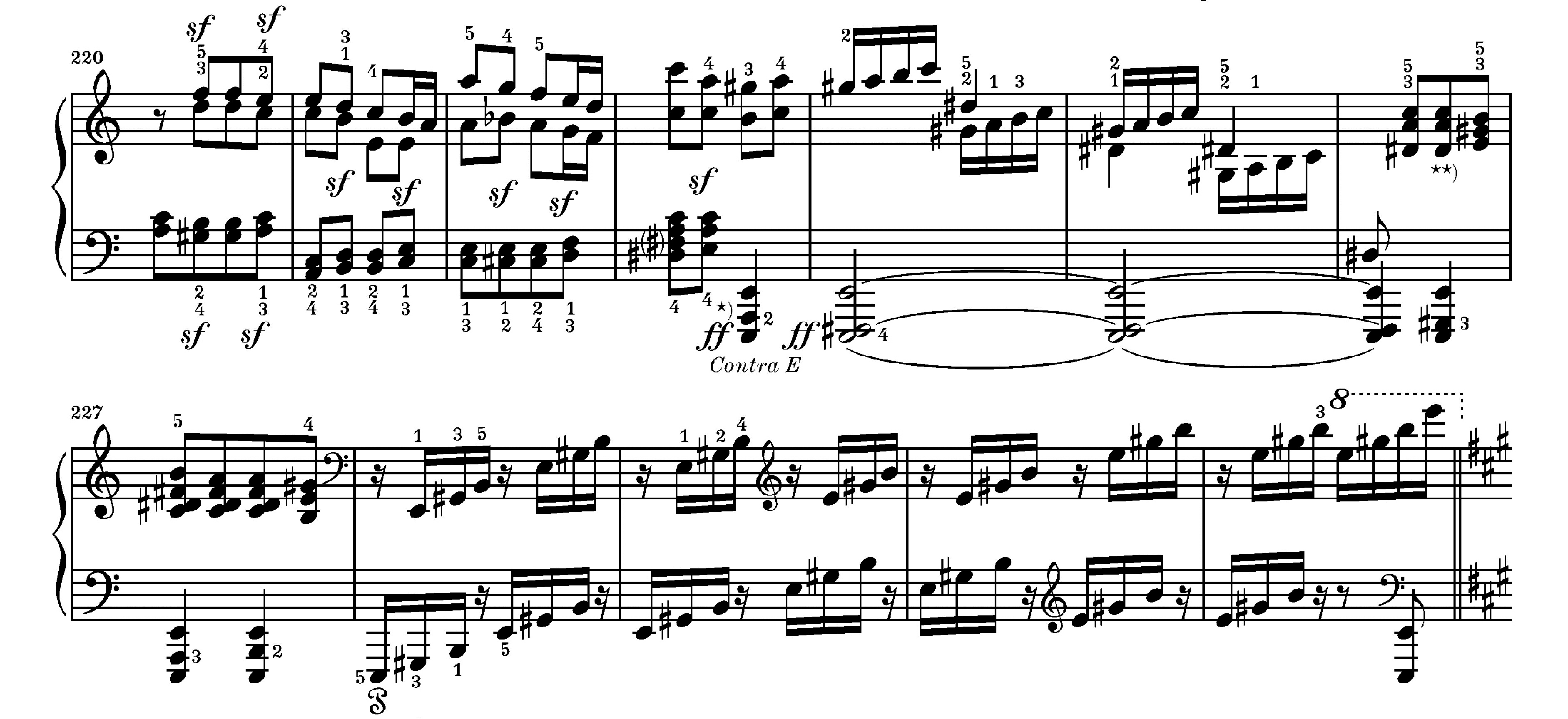

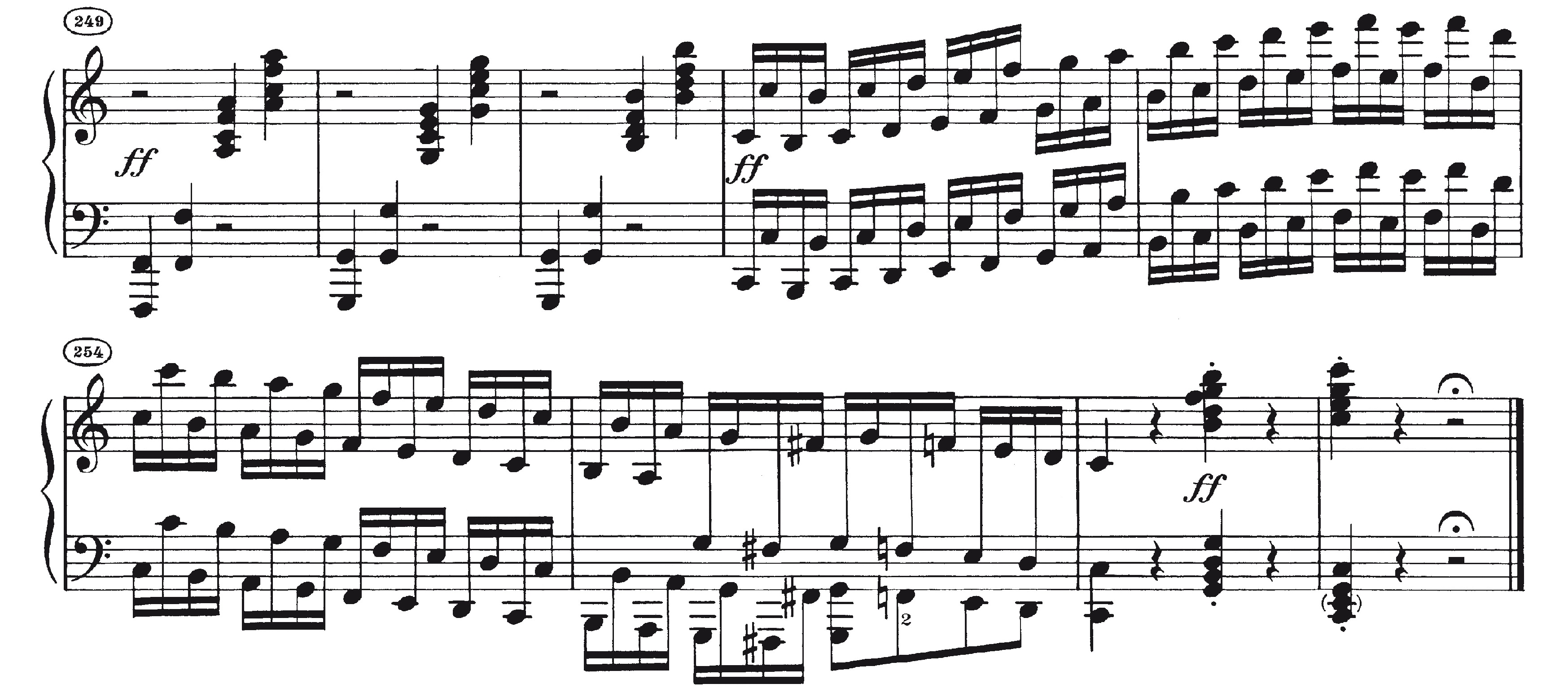
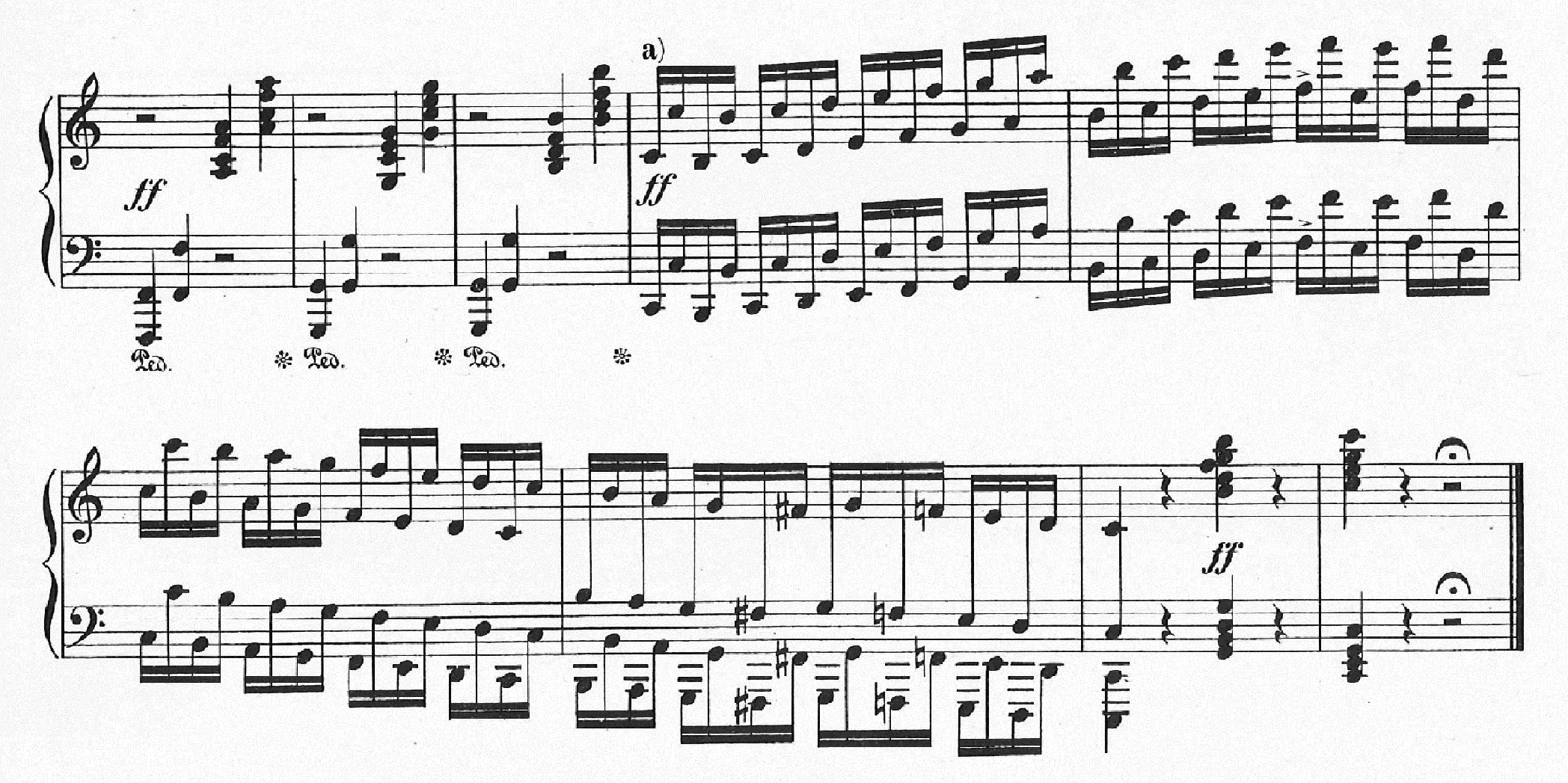
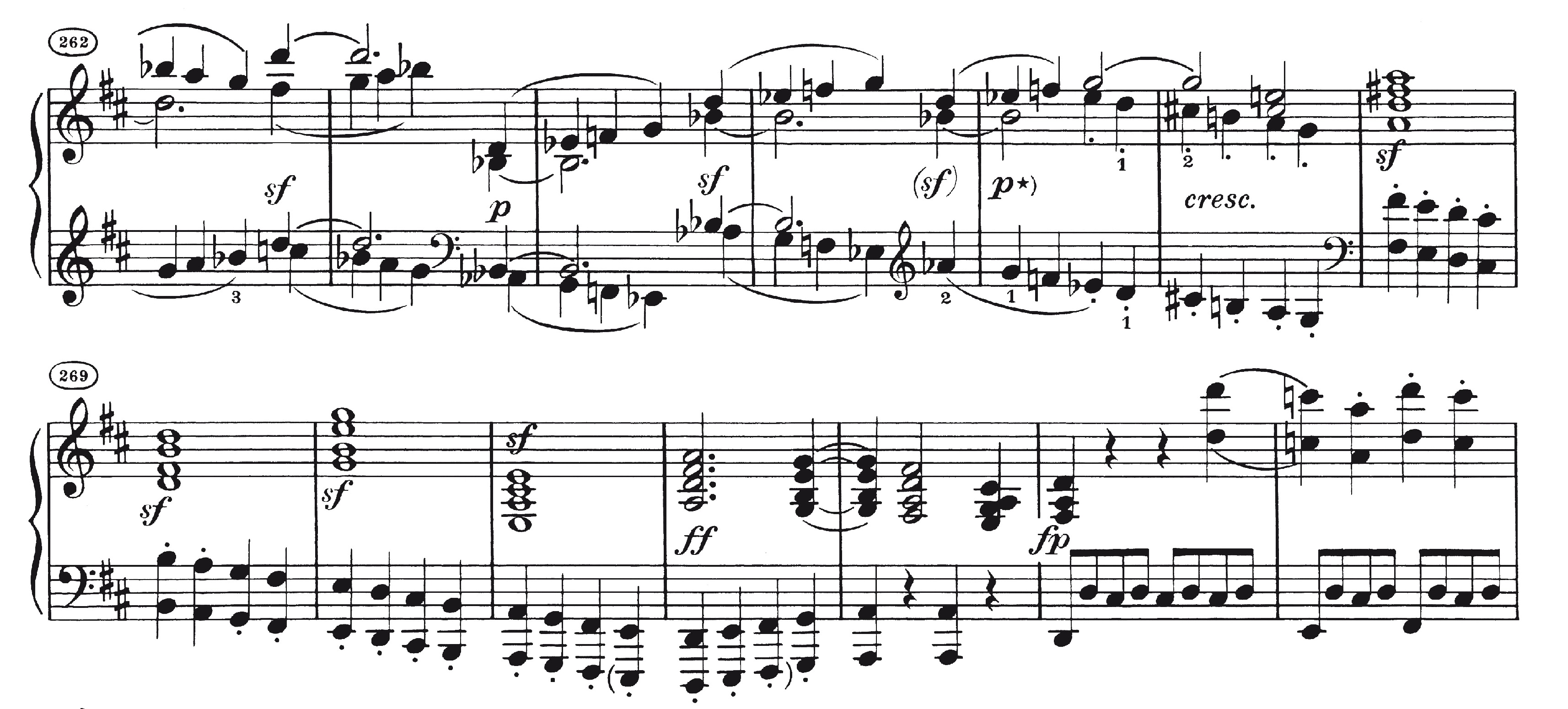
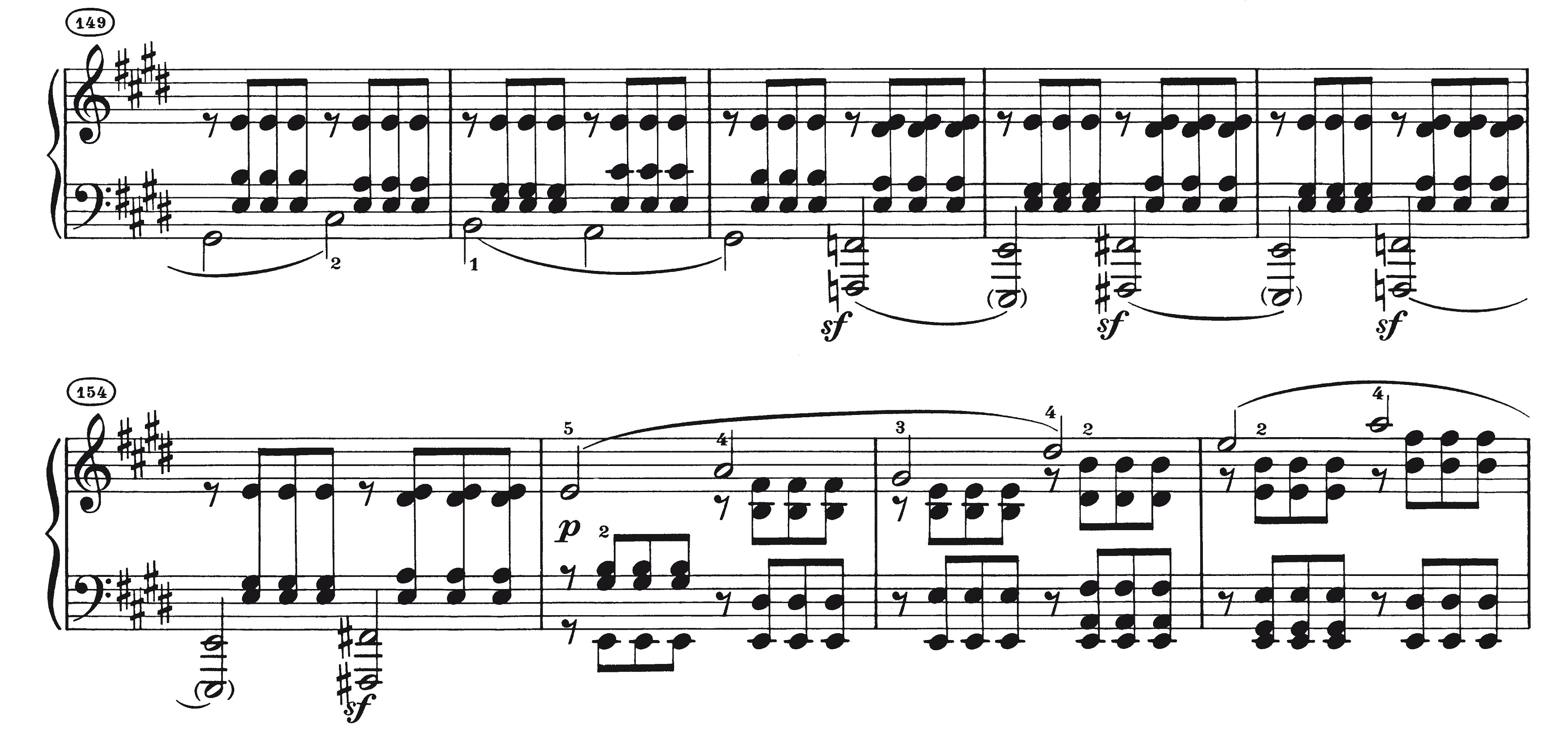
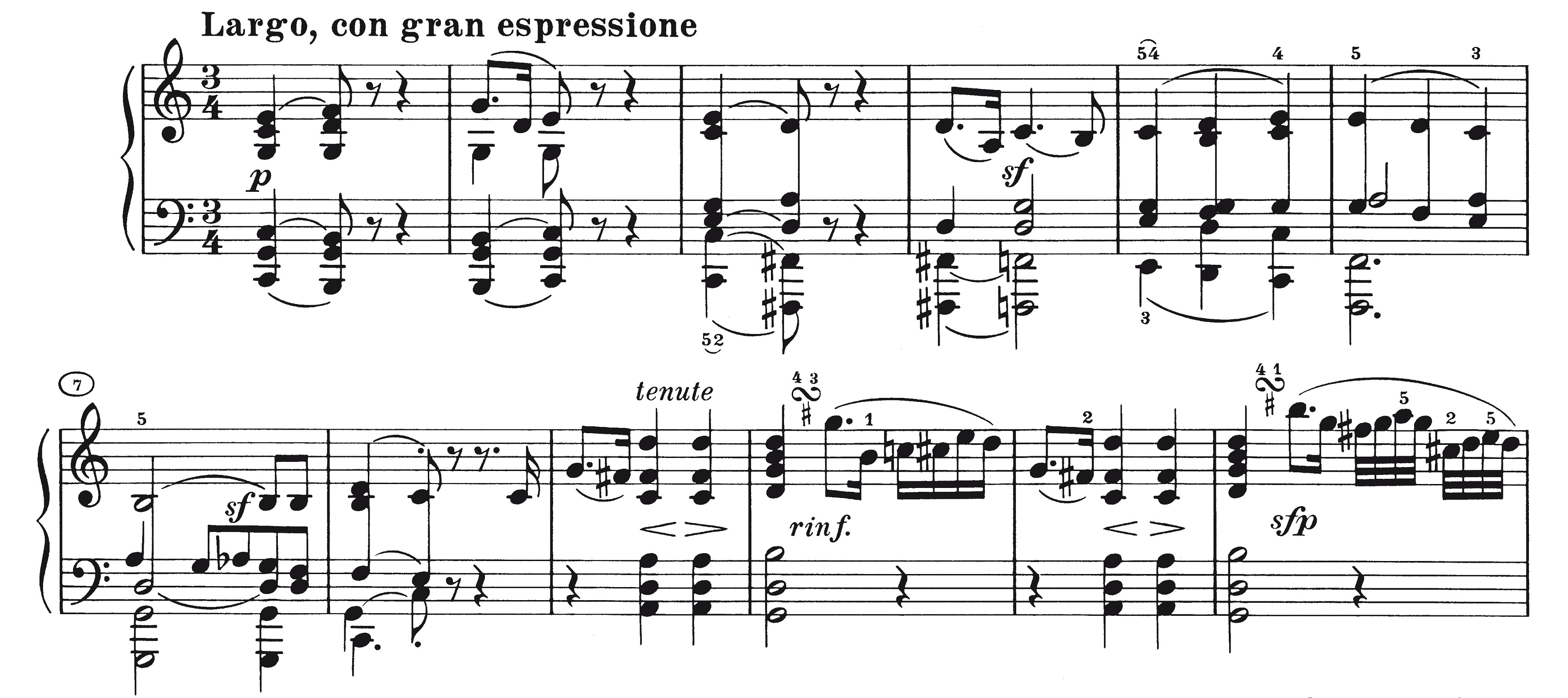

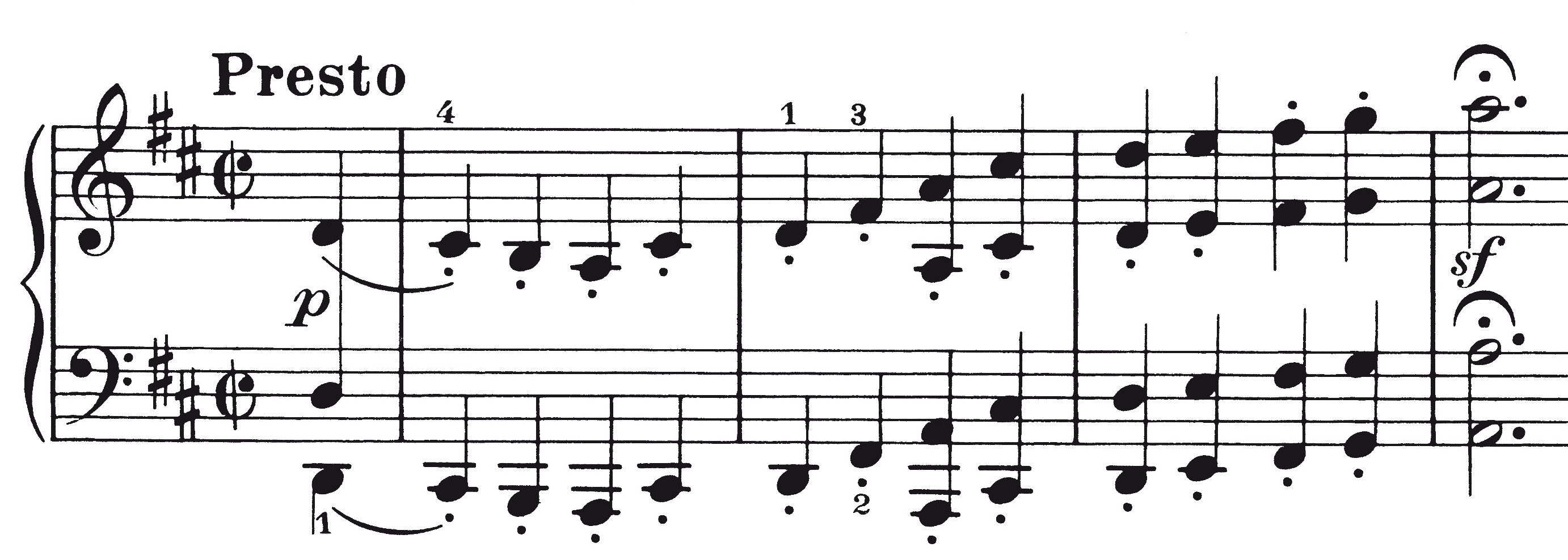
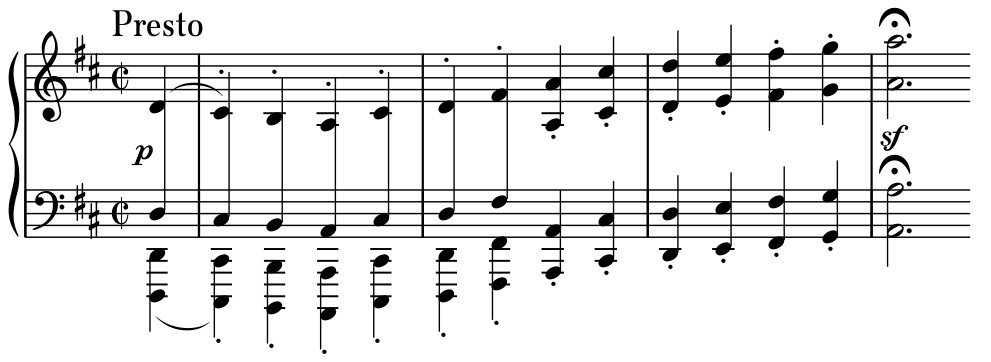
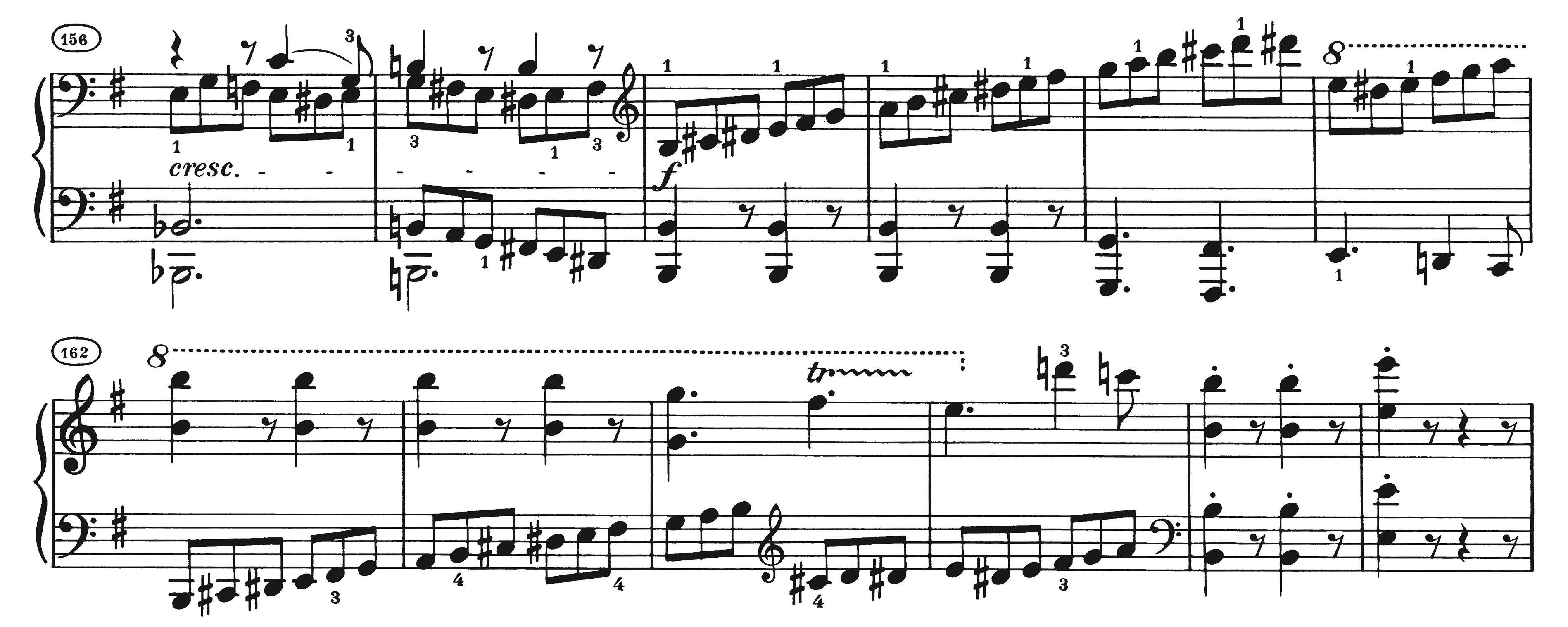
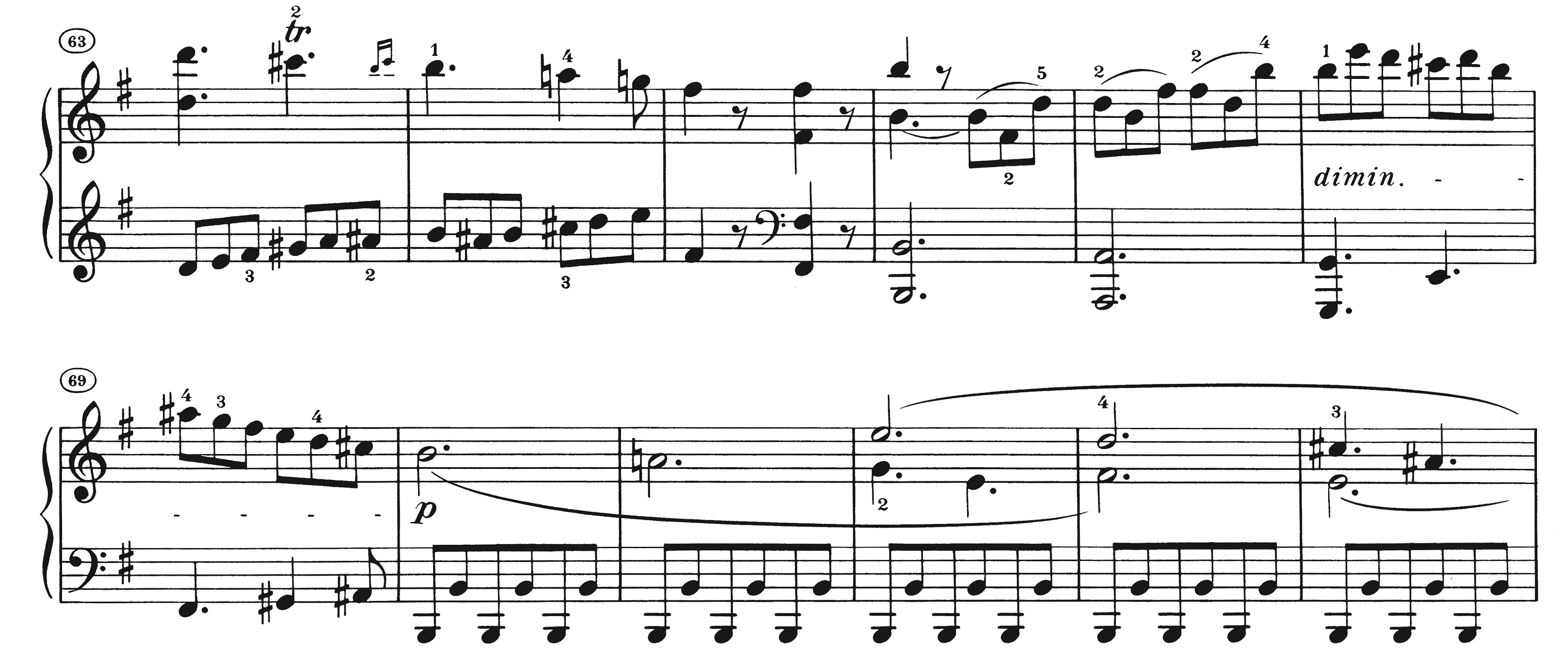
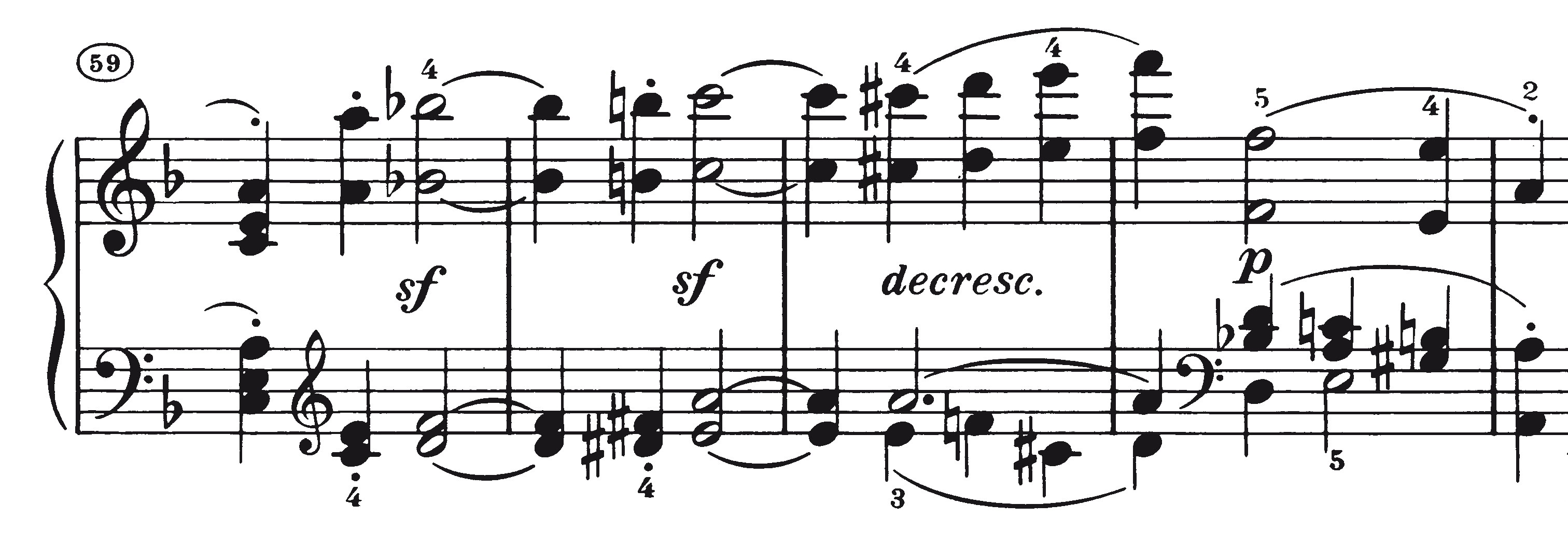
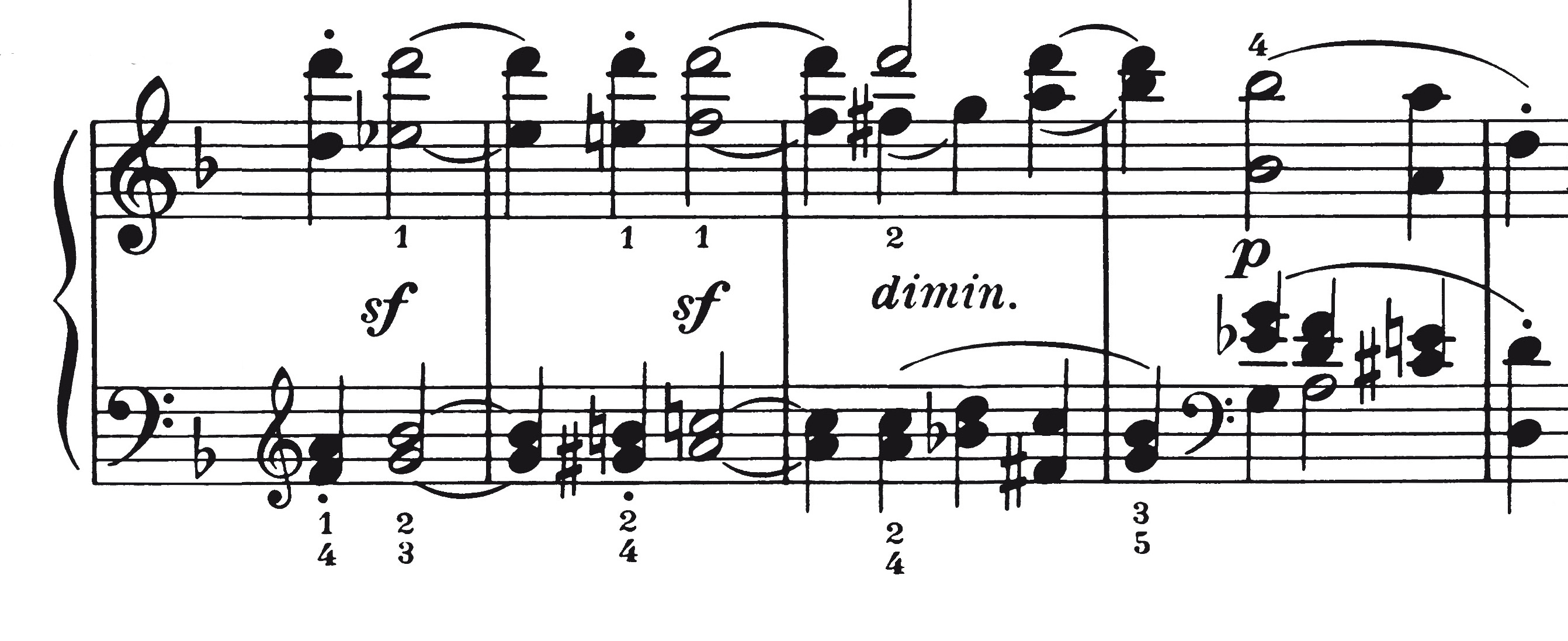
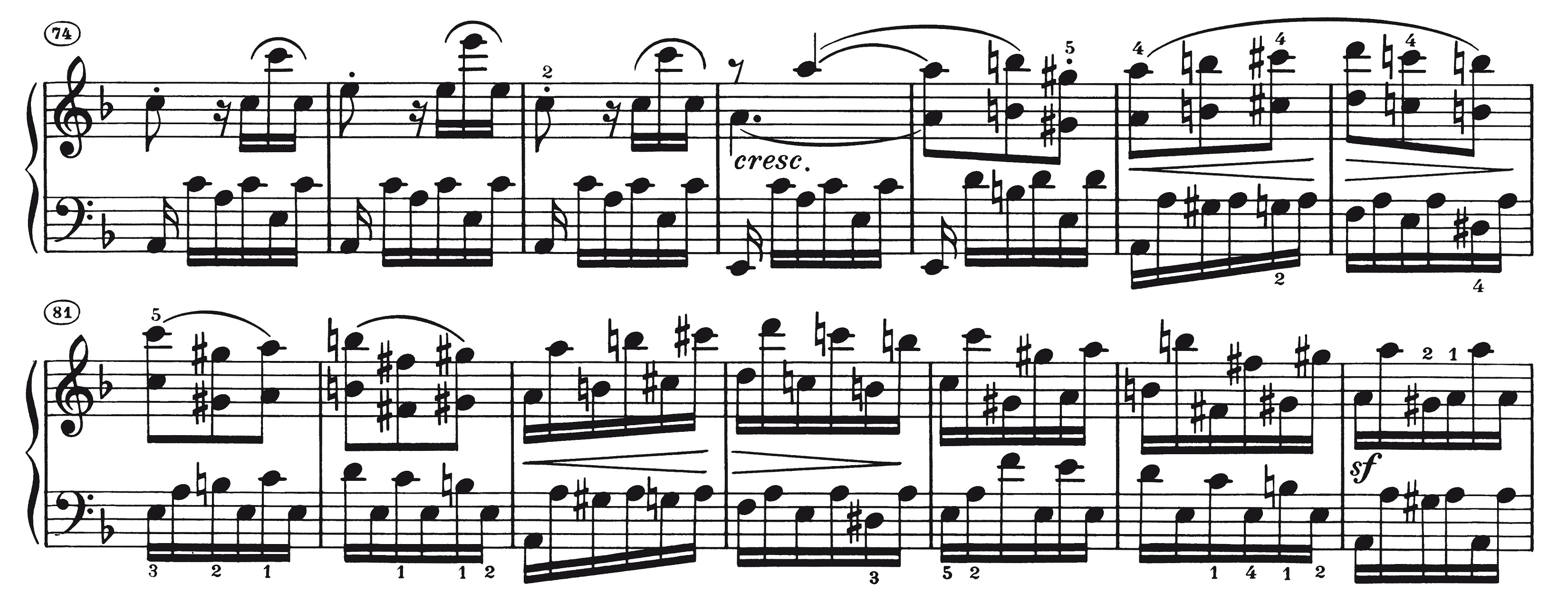
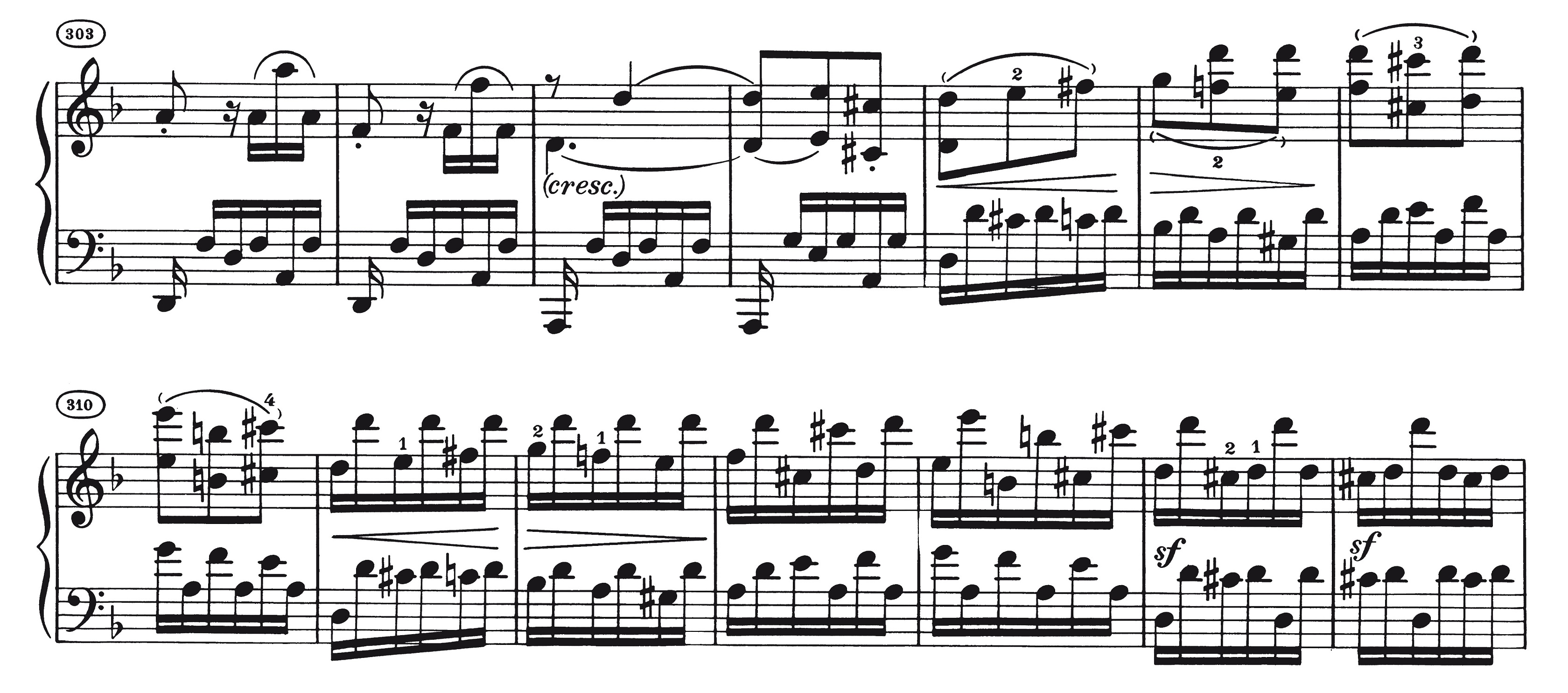
You should do a supplement like in the “Chopin Nocturnes”, you know the page in the back? I really kinda like that page 😉
I’ve never been against modifying such passages in order to take advantage of the modern piano’s present range. And no matter how tastefully composers like Beethoven have circumvented the problem of the limited keyboard compass, I see no reason why one should necessarily play the music exactly as written. ‘We’re used to it that way’ is to my mind a very poor rationale; keep in mind that if we knew these various passages only in an extended-keyboard version, we wouldn’t think every time ‘hey, that doesn’t sound right’…and that, I think, includes such examples as the two ‘Tempest’ Sonata extracts above, where I would not hesitate to change the text a bit.
While I completely agree with the points that you make (fine to modify passages, no reason to play music exactly as written), I find myself in the author’s camp with respect to the Tempest sonata. I see the workarounds here as one of those flights of genius that come from creatively breaking the rules, whereas changing the notes to simply transpose the material for the recap strikes me as less creatively sticking to them. After all, the latter is what we are expecting, and we are never quite satisfied with getting what we expect. I suspect, if Beethoven had had the modern keyboard range, that he would have had to make some other departure from a simple recapitulation of the material in the higher key.
However, in the Op. 81a last movement, I’m quite happy to change the text, and I’ve come around to doing so in the Op. 90 first movement as well. Also, if I may say so, you are one of my favorite pianists, and perhaps if you played the altered notes I would like them better than I do when I play them. But I don’t think in this case the alteration represents an improvement.
To reinforce the ideas of the original post: Heinrich Schenker showed that register plays a crucial role in keyboard works like those of Beethoven, and that the pivotal outermost notes create a kind of frame within which the composer presents his musical drama. These limits were already taken into account by the composer and influenced compositional choices in ways that are not immediately apparent. In most cases, transgressing the limits of this frame by adding lower or higher notes leads to unfortunate results. Notes that appear nowhere else in the piece suddenly jut out in ways that the composer did not intend.
Here is an example by another composer, Chopin. His first etude encompasses the entire keyboard of his time from our lowest C to our highest F. This was no accident but a kind of “statement” by the composer that he is taking these two extreme notes as the limits of his musical domain. At one point (m. 69) one could “modernize” the music to reach the highest G, a barbaric tampering with the music that would be in complete conflict with the composer’s concepts and the musical structure..
No doubt that Beethoven would have used every part of the lower keys available – especially re the passages with double octaves continuing down as scales – I have always added the lower notes. Came to this forum to see if anyone had been discussing Op 14 No 1 and sure enough (!)…I am leaning towards adding the lower E’s.
For the piano sonata no. 3 example, I WOULD add the missing bass notes. There is also a similar passage at the end of the exposition, where we could make it go down all the way to the low A.
Also, I actually WOULD add the low E’s in the piano sonata no. 9 example. In the 3rd movement, there’s a part where the bass goes B1/B2 – A1/A2 – G1/G2 – F#1/F#2 – E2. I personally would add the low E1 there as well.
I wouldn’t really alter the excerpts in the Tempest sonata, though. But in one part of Beethoven’s piano sonata no. 3 (1st mvt), the RH goes G5-A5-C#6-A5-E6-C#6-A5-G5. I would change that to G5-C#6-E6-C#6-G6-E6-C#6-G5.
Uh… for the recapitulation of the Piano Sonata No. 30 (2nd mvt) example, I think the REAL reason why Beethoven “forgets” the low bass notes is because even when he got the lower notes, his piano didn’t go down to the low B (B0). It only went down to C1. So I’m pretty sure Beethoven was trying to work around the new C1 boundaries in this case, not the obsolete F1 boundaries.
PLOT TWIST: I am afraid Wallner had made a HUGE mistake. I’m pretty sure it’s actually B1/B2 – B1/B2 – B1/B2 – B1/B2 – G1/G2 – F#1/F#2 – E1/E2 – D2 – C2 – B1. So it makes totally no sense that Beethoven tried to work around the unnecessary F1 limit!
There is one part in the finale of his 29th sonata where Beethoven tries to work around the C1 boundaries. It goes C1/C2 – Bb1 and then Bb1 – C1/C2 – Db1/Db2 – Eb1/Eb2 – F1/F2 – Gb1/Gb2. We could definitely add a Bb0 on the Bb1s. (I couldn’t believe Wallner forgot to add the low Bbs there!)
Dear Animé character,
Thank you for your interesting comments. I would like to try a reply as follows:
1. That Beethoven was in his head still working partly around the F1 boundary you can see in one other place in Op. 109, too, meas. 68. Also one could ask in the case of meas. 161 ff. why he did not continue down to the C sharp in octaves if he was only concerned about the B.
2. I do not see a low E2 in any source, so I would be most interested to know why you think it should be there against Beethoven’s intention.
3. I presume you are referring to meas. 113/114 of the last movement of op. 106. Again, the low Bbs are not in the sources. This is why Ms Wallner did not add them, I presume.
Very best wishes
Norbert Gertsch
1. You must be referring to the start of the development section. Apparently, Beethoven wasn’t obsessed with the unnecessary F1 limit. He just did it like that on purpose due to the diminuendo. And about the recapitulation case, please re-read what I said.
2. What are you talking about?
3. There were no low Bbs. Beethoven was now trying to work up with the new C1 limit.
There were even some other cases where Wallner strangely forgot to add the missing notes, such as:
– No. 17 in D minor, 3rd movement (missing E1)
– No. 21 in C major, 3rd movement (missing E1)
Additionally, I personally disagree with the OP’s idea that Beethoven had persisted with the F1 limit. For the 29th piano sonata cases:
– 1st movement, m. 262: This actually has to do more with voice-leading-related stuff, not the limited range.
– 3rd movement, m. 104: Well… Beethoven just… wrote it like that.
Thank you for your comments. Let’s agree to disagree. As for point 2: No original source, neither Beethoven’s autograph nor the first editions have that note.
Regards, Norbert Gertsch
Some editions in IMSLP have that note in the recapitulation example. I personally would play that low E, too.
And I personally don’t understand what OP means by “Established by the 1st movement are not only the low pitches, and we would have to ask ourselves why Beethoven forgets that here.” The only reason I see here is the new C1 limit which prevents it going down to the low B. I don’t really get what the OP is saying.
Also, given how terrible Beethoven’s handwriting was, it’s probably unknown of what Beethoven actually meant: Single E2 note vs. E1/E2 octave.
(But I’m not sure if adding the lower octaves to the D, C, and B is a good idea, as you might sqish up all the notes and it won’t sound quite neat.)
Even AFTER he got the notes in the C1-E1 register, he was, indeed, not fully satisfied, I guess.
There’s is a passage in his Cello Sonata No. 5 (written during his “late” period), where he seemingly wanted to go down to A0, but couldn’t make it because the lowest playable note on his piano was C1.
I see an excerpt in the finale of his Piano Sonata No. 21 in C, where Beethoven again tries to work around the F1-F7 range limit. But what’s even more surprising is that Wallner had forgot to add the missing bass notes!!!
It goes like this: E2 E2 | A1/A2 B1/B2 C2/C3 D2/D3 | E2/E3 – E2/E3 D2/D3 | C2/C3 B1/B2 C2/C3 A1/A2 | E2 – E2/E3 E2/E3 | A2/A3 B2/B3 C3/C4 D3/D4 etc.
Where is that lower octave to the E2 (E1)??? Why didn’t Wallner add the low E1 on the unison E2s?
And, as Honoka Kousaka had noted, Wallner had also forgot to add the missing low Bb0s in the finale of the 29th sonata.
You must be referring to the start of the B section (the structure goes A-B-A-C-A-B-A-Coda) of the finale of “Waldstein”.
Wallner did indeed forget to add the low Es. I don’t know why she forgot to do so, either. Maybe she had just simply overlooked?
Even after he got his C1-F7 piano range, Beethoven wasn’t all that happy with it.
There is that one part in the finale of his “Hammerklavier” sonata (m. 113-115) where he explicitly tries to work around the C1 boundary. I see that Alfredo Casella had added the missing low Bbs in his own edition, taking advantage of the modern 88-key piano range, from A0 to C8.
Even Chopin had done several workouts for his limited range. There is one part at the end of the 1st movement of his 2nd piano sonata, where to me Chopin wanted to have the left hand descend all the way down to our lowest Bb, but he wasn’t able to do it because he didn’t have that note. At the start of the coda section of his 1st scherzo, too, it seems like the composer had wished for our lowest B.
Does has anything to do with the technology and the instruments we have these days as compared to that time? I think that is also a major difference.
Are you sure that the highest note was F6 at the time when he wrote his Tempest sonata?
There is a high F#6 in the 1st mvt of his 9th piano sonata (in E), and a G6 in the piano part of his 5th violin sonata (in F). I’m pretty sure that the range of the fortepiano back then went from F1-G6, consisting of 63 keys.
Dear Kyubiwan,
To the best of my knowledge, the keyboard stopped at F6. Do you have any sources for your information? I would be very interested. The fact that Beethoven goes below or above the keyboard is well known, he sometimes simply forgot about the boundaries (also happens with orchestral instruments in his full scores).
Best wishes
Norbert Gertsch
In the measure 41 of his 9th piano sonata, there is a built-in high F#6. If this was out of the range, then why was Beethoven somehow available to write it?
When composing, he sometimes forgot about the available range.
Yeah, you’re right.
I mean, I actually thought correctly that it was F1-F6 at first, but then I got confused/puzzled when I saw that F#6 in his 9th sonata.
I’m coming back here because I just found out that at the time when Beethoven composed his last five sonatas (28-32), the highest note on his piano was actually **C7** and not F7. I always thought it was F7 because his 29th sonata goes up to that note – and even the 28th, 30th, and 32nd go up to E7, C#7, and Eb7 respectively. Only the 31st goes up to C7.
So I guess you’re right that sometimes Beethoven just forgot about the limited range(s).